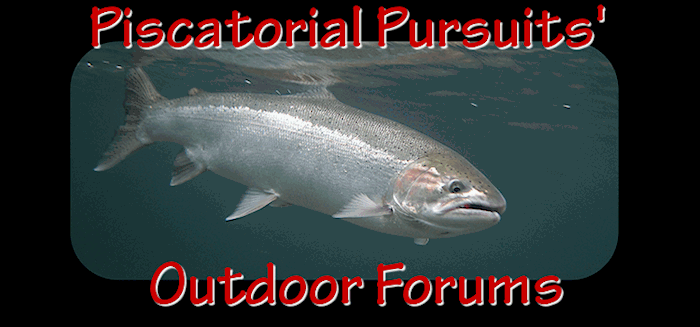Eddie -
Thanks for the heads up - haven't had a chance to read the book yet but have put it on my to read list.
Your comment regarding wild salmon release has been discussed before but however it remains germane. If one truly beliefs it is mandatory that all wild steelhead be release then why not all wild salmon. All the anadromous salmonid's are using the same freshwater habitats and at least some portion of the same ocean. At least in the case of steelhead we are allowed to harvest wild steelhead in only rivers expected to met or exceed their escapement goals. While in the marine fisheries for salmon the anglers may catch a salmon from wide geographic areas. For ESA listed Puget Sound chinook the with the salmon season for the last couple years catch anywhere from 7% to 30% or more of individual Puget Sound stocks.
When one begins to question whether to have wild salmon release a whole another list of questions come up about hooking mortality etc.
All the various salmonid stocks have their ups and downs with periods of high abundances and low abundances. While it makes just good sense not to harvest when abundances are low and why not when they are high. A Puget Sound example this past season would the situation of the wild pinks and chinook. Lots of pinks and allowing the harvest seemed me to be appropriate however maybe not for the chinook were many were not likely to meet escapement goals.
The situation with wild steelhead. That a hypothical river that had a consistent freshwater production of say 100,000 wild steelhead smolts. From studies up a down the coast we know that wild smolt to adult survivals vary from as low as 3% to as much as 25% (average in the 10 to 15%). Meaning that the potential run sizes might range from as low of 3,000 to as many as 25,000 steelhead.
It seems to me that some sort of sliding scale of allowable fishing impacts (dead fish- whether from harvest or hooking mortality) makes sense. That includes harvest at high abundances. For me that would work regardless of the species.
Tight lines
Smalma













 Previous Topic
Previous Topic Index
Index



